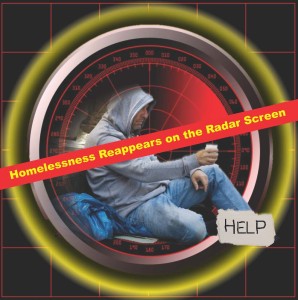By Jeremy Reynalds, Ph.D.
Founder and CEO
Joy Junction Inc.
 Homelessness had dropped off the radar screen since the closing of various tent cities, and the horrific mid 2014 killings of two homeless men in a troubled Southwest Albuquerque neighborhood
Homelessness had dropped off the radar screen since the closing of various tent cities, and the horrific mid 2014 killings of two homeless men in a troubled Southwest Albuquerque neighborhood
That changed a bit with the recent throwing of fireworks at a homeless man, and his subsequent serious injury. That crime has understandably horrified our community.
Of course, a good thing happened with Bernalillo County opening its new Supportive Housing Program, which provides subsidized housing and mental health support to people coming out of jail dealing with mental illness and homelessness.
However, there don’t seem to have been any positive developments in the city. While some people seemed to want Albuquerque Mayor R.J. Berry to spearhead the opening of a legal Tent City, that wish doesn’t appear to be going anywhere, and perhaps understandably so.
Maybe the mayor knows that such a move-while seemingly simple-would probably soon get bogged down in an ongoing series of legal nightmares. They would primarily focus on ownership of, and insurance for, the land.
Sooner or later, someone would get hurt or feel that their rights had been violated, and just like sharks to a trail of blood in the water, lawyers would get involved, and threats of litigation follow.
While Seattle is apparently is apparently moving in the direction of legal tent cities, an article I read in Seattle media didn’t refer to possible lawsuit issues and who would pay the freight.
So with an ever visible increase of panhandlers occurring in the Duke City, Berry opted for something safer, placing blue signs citywide at intersections used by panhandlers.
They read, “If you need help with food or shelter or would like to donate, call 311.” A website is listed underneath. It’s www.donateabq.com, which goes to a sub page of the United Way.
The idea is donate money to the United Way of Central New Mexico. The group will then use the money to feed the hungry, provide shelter for the homeless and help the mentally ill.
However, a major problem with this is that the United Way operates with established agencies, often not used by those with untreated or undiagnosed mental health issues.
In late May 2015, I emailed Berry citing a variety of concerns about this initiative. Part of that email read, “You correctly contend that $5.00 given to the donateabq site will go further in helping the hungry than if the same $5.00 was given to a panhandler. No one disputes that. However, some/many of those panhandling have mental health issues, PTSD and other afflictions, and will not go near any of the established shelter/meal sites. How does this initiative help them?”
I added, “There are also individuals who, we have to admit, will always be dependent on the largesse of others, but who we as a community have a moral and societal obligation to assist. If people stop giving donations to them, how will they survive?”
That email was never acknowledged.
Another problem is that the 311 service is only open Monday through Saturday from 6 a.m. through 9 p.m., and on Sundays from 9 a.m. to 6 p.m. “for animal welfare calls and fixed bus times.”
So if you’re desperate in the middle of the night, look up and see one of the many signs plastered around Albuquerque, you’re out of luck. Wait till it gets light.
I suspected that 311 operators are generalists, and not overly familiar with the services available for the homeless and hungry in Albuquerque.
I was right. Undercover calls earlier this year by some of my staff posing as homeless individuals resulted in routinely wrong information given to them. They were referred to agencies that were either closed, or inappropriate for their need (www.joyjunction.org/no-food-and-shelter-information-for-the-homeless-and-hungry-from-albuquerques-311-service-between-9-p-m-and-6-a-m).
Now admittedly, Berry was the driving force behind the 2011 inception of Albuquerque’s Heading Home. It was originally billed as a program to house those falling in the categories of “medically vulnerable and chronically homeless, veterans who are ineligible for their service-related benefits, or families who could have their children taken away due to unstable housing.”
Its purpose statement seems to have changed over the years from what was originally stated, but no one can deny that Heading Home has become quite successful.
However, the Heading Home initiative was quite a few years ago, and I was curious what Berry was doing now. Guessing that my emails to him wouldn’t be answered, I had one of my staff pose as a concerned citizen and call 311 late last week
She asked the 311 operator what the mayor had been doing for the homeless recently.
My staffer said, “The 311 operator who took my call stumbled how to answer my question, so I asked him if I should call the mayor’s office. He quickly said I didn’t have to do that because he had the information; he just had to pull it up.”
My staff person said the operator said Albuquerque Heading Home was Berry’s primary initiative.
She continued, “I then asked him what else the mayor had done, and he said that Albuquerque Heading Home was it.”
So what’s the lesson here? It’s a simple one. While homelessness goes in and out of public consciousness, it’s still there. While the government has its place in helping the needy, the answer should not lie with them.
As a caring community, we – you and I – are responsible for doing what we can to help the homeless, whether sleeping on a sidewalk, living in a tent or getting back on their feet while staying in a mission.
What do you say?


